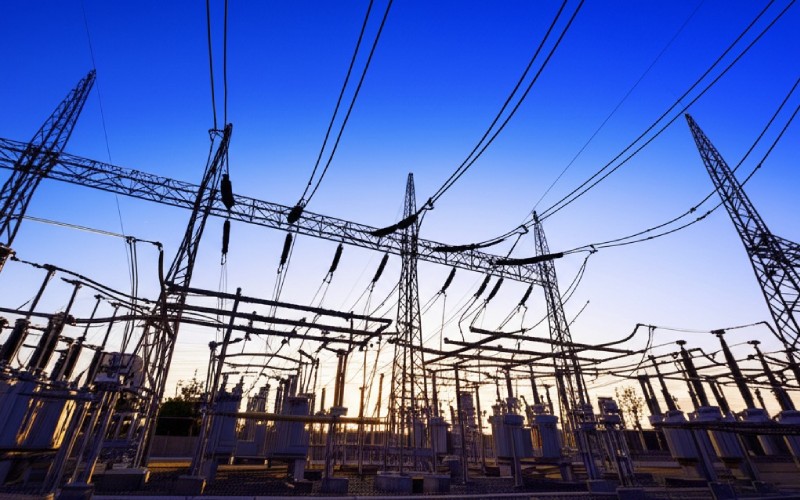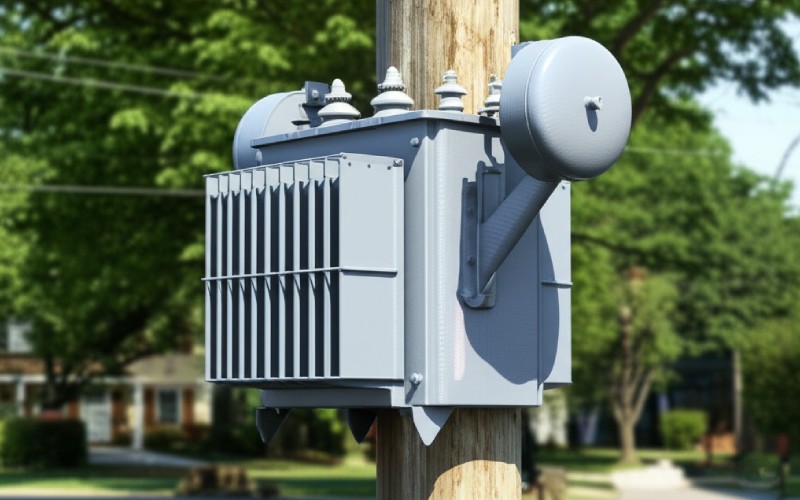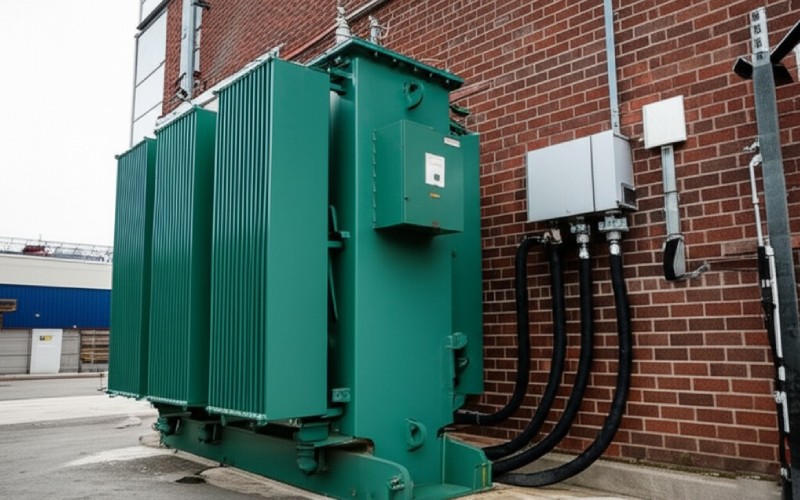Let Sino's Lamination Stacks Empower Your Project!
To speed up your project, you can label Lamination Stacks with details such as tolerance, material, surface finish, whether or not oxidized insulation is required, quantity, and more.

For many people, the terms single phase and three phase sound complex. But they don’t have to be. The difference between single-phase and three-phase systems is actually quite simple once you break it down. In this article, I’m going to do just that. I’ll share what I’ve learned over the years in plain, simple English. You will learn the main distinctions between these two types of electrical transformers. We’ll look at how they are built, where they are used, and how to know which one is needed. This will help you understand the power distribution that happens all around you every day.
Let’s start with the basics. What is a transformer? Think of it as a device that changes the voltage of electricity. The power that travels long distances is at a very high voltage. But the power you use in your home is at a much lower voltage. A transformer is used to “step down” or lower that voltage to a safe level. A transformer can also “step up” the voltage when needed for power transmission.
Every transformer works on the principle of magnetic induction. It has two sets of wires, or windings, wrapped around an iron core. When electricity flows through the first winding, it creates a magnetic field. This field then creates, or induces, an electrical current in the second winding. The number of turns in each winding determines if the voltage goes up or down. A transformer doesn’t create electrical power; it just changes its voltage level. This simple but brilliant device is a key part of our entire power system.
These transformers are designed to handle different types of electrical loads. The main way we classify them is by the phase power they handle. This brings us to the core of our topic: the difference between single phase and three phase power systems.
Now, let’s talk about the first type of transformer. A single-phase transformer is the kind you’ll most often see in residential areas. As the name suggests, it works with a single phase electrical system. This means it operates on a single alternating current wave. Imagine one person pushing a swing. They push, the swing moves, and they wait for it to come back before pushing again. That’s similar to how single phase power delivers energy in one up-and-down wave.
A single phase transformer is built in a simple way. It has one pair of transformer windings: one primary and one secondary. Because of its simple design, a single-phase transformer is usually smaller and less expensive than its three-phase cousin. Single-phase transformers are commonly used for lighting and heating in homes and for running small appliances and motors.
You will find that single-phase transformers are suitable for most non-industrial needs. The power supply to your home is likely a single-phase system. So, the transformer on the pole outside your house is a single phase transformer, working hard to provide the right voltage for your daily life.

If a single-phase transformer is like one person pushing a swing, what is a three-phase transformer? A three-phase transformer works with a three-phase system. Now, imagine three people pushing that same swing. Each person pushes at a slightly different time. The swing gets a constant, steady push and never slows down. This is how three phase power works. It delivers power in three waves that are perfectly timed to provide a smooth and constant stream of energy.
A three-phase transformer is known for its construction. A three-phase transformer has three pairs of transformer windings arranged on a single core. That means it has three primary windings and three secondary windings. Sometimes, you will see that these three-phase transformers have a three-section iron core to hold the three pairs of windings.
This design makes the performance of the three-phase transformers very efficient. They can handle much more power. That is why three-phase transformers are used in factories, large buildings, and anywhere you need to run large, powerful equipment. The fast performance of the three-phase units makes them ideal for these big jobs.

The major difference between single-phase and three-phase really comes down to power delivery. I’ve used the swing analogy, and it’s a good one. A single phase system delivers power in a single wave. The power level rises and falls. For things like lights and small appliances, this is perfectly fine. You don’t notice the slight power dips. This is the single phase vs three phase debate in a nutshell.
On the other hand, a three-phase power supply delivers power through three phases, or three separate waves. These waves are offset from each other, so the power supply never drops to zero. It is always delivering a strong, steady flow of energy. This is the main reason why we need to talk about the difference between single-phase and three-phase power.
This constant power flow is why a three phase supply is so important for big machines. A large motor, for example, needs that steady power to run smoothly and efficiently. Using single phase power for a big motor would be like trying to run a race car on regular gasoline—it just wouldn’t perform well. The phase and three phase power systems are built for different jobs.
Let’s look at the physical construction. A single-phase transformer is quite simple. It has one set of primary and secondary windings on a core. Single phase transformers come in different sizes, but the basic design is the same. It’s built to handle one wave of electricity.
A three phase transformer is more complex. You can think of it as three single-phase transformers in one box. It has three primary windings and three secondary windings. These are all wound on a single, shared iron core. This makes the three-phase transformer more compact and often lighter than using three separate single-phase units to do the same job.
So, the core difference between single-phase transformer design and that of a three-phase transformer is the number of windings and the core structure. The three phase transformers come ready to handle a more demanding load. This is a key difference between single.
You can connect multiple transformers together. It is very common in power distribution to create a bank of three transformers. By connecting three identical single-phase transformers in a specific way, you can create a working three-phase system.
Why would someone do this? Sometimes, it’s easier to transport and install three smaller single-phase transformers than one large three phase transformer. Also, if one of the units in the bank fails, you only have to replace that one transformer. With a single three-phase transformer, if one part fails, the whole unit might need to be replaced.
However, using a single three-phase transformer is often more efficient and takes up less space compared to single-phase transformers set up in a bank. The choice often comes down to cost, space, and how easy it is to do repairs. A three-phase transformer can also serve as three separate power sources in some cases.
I’ve touched on this, but let’s be clear. Single-phase transformers are used everywhere in our daily lives. They are the backbone of residential and light commercial power. Any application that doesn’t need a huge amount of power can run on a single-phase system. This includes lights, TVs, computers, and most kitchen appliances.
These transformers are commonly used for what we call “non-motor” loads. Think about it: most things in your house don’t have a big, powerful motor. This is where single phase shines. It provides enough power for these needs reliably and at a lower cost. A single-phase transformer is perfect for this kind of power distribution.
The transformers are mounted on utility poles or on concrete pads in neighborhoods. The next time you see one, you’ll know that transformer is likely bringing safe voltage to the homes nearby. These single-phase transformers and three phase transformers have very different jobs.
So, why can’t we just use single phase for everything? The answer is power. For industrial and heavy commercial applications, we need a lot of it. This is where you will see the use three phase systems. Think of large factories with heavy machinery, big office buildings with powerful HVAC systems, or data centers that run 24/7. These all require high power.
A three-phase power system can deliver more power more efficiently. A three phase transformer can transfer a lot more energy without needing bigger, heavier wires. This makes three-phase power distribution cheaper for large-scale operations. A three-phase transformer is essential for running a large motor smoothly, which is common in industry.
Three-phase transformers are widely used in any setting that demands a constant and robust supply of electrical power. They provide the backbone for our industrial world. This is why understanding the difference between single-phase and three-phase is so important. These transformers and three phase transformers are critical.
For most of us, we don’t have to make this choice. The power company decides whether our homes get single phase power. But if you’re a business owner or an engineer, selecting a transformer is a big decision. The choice between single-phase and three-phase depends entirely on your power needs.
First, you need to know the load. What will you be powering? If it’s just lighting and office equipment, single phase is probably enough. If you’ll be running large motors or heavy machinery, you will absolutely need three phase power. The key differences between single phase systems guide this choice.
You also have to consider the voltage. You need to select the right transformer that can handle the input and output voltage you need. The decision between a single-phase transformer and a three-phase transformer is one of the first steps in designing an effective phase power system. Getting this wrong can be costly and inefficient.
The topic of the phase and three phase transformer is detailed. Let’s boil it down to the most important points. Here are the main distinctions between single-phase and three-phase systems that you should remember. These are the crucial differences between single phase and three phase.
The main difference between single and three phase lies in their power delivery and construction. A single-phase transformer and a three-phase unit are built for different scales of work. The single-phase transformer and three-phase systems are both vital. This discussion about a single-phase transformer and three-phase transformer should help you see why both are needed. We need both single-phase and three-phase transformers for our modern world to function.
A transformer is a device used to transfer power and change voltage. They are used in power transmission and distribution. Whether it’s a single-phase transformer or a three-phase transformer, they are essential. Three-phase transformers make industrial work possible. The single-phase vs. three-phase choice depends on the job. Knowing the difference between single-phase and three phase helps you understand the power supplies that run our world. This is a very important difference between single-phase and three-phase.